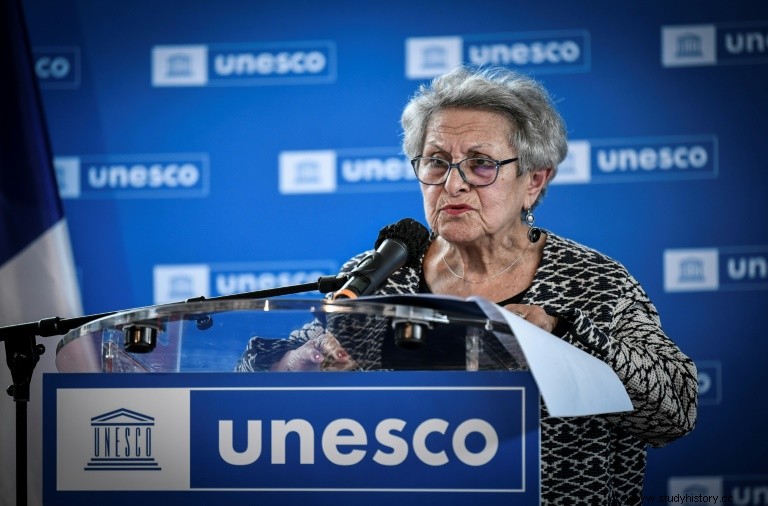A ceremony was organized for the occasion at the headquarters of Unesco, which acted as mediator between the owner, France and Guatemala, two signatory countries of the 1970 convention on the prohibition of imports, the illicit export and transport of cultural property.

A fragment of a Mayan stele dating from the 8th century which was handed over by a French collector to Guatemala, her country of origin, on October 25, 2021 in Paris
The fragment of a Mayan stele dating from the 8th century and having narrowly escaped an auction was returned on October 25, 2021 in Paris by a French collector in Guatemala, her country of origin. A ceremony was organized for the occasion at the headquarters of Unesco, which acted as mediator between the owner, France and Guatemala, two signatory countries of the 1970 convention on the prohibition of imports, the illicit export and transport of cultural property.
"My dearest wish is that the fragment joins the rest of the fresco"
In 2019, during the sale of a hundred pieces, largely from the private collection of Manichak and Jean Aurance, Guatemala assured that a fragment of a stele came from Piedras Negras, a famous Mayan archaeological site having been looted. Said stele had been photographed in situ by archaeologists at the end of the 19th century, thus proving its origin. Mrs. Aurance, owner of the piece, had then decided to withdraw the object from the sale and to start negotiations with the country. On October 25, the collector explained that she bought the piece in the 1960s, with her husband, who has since died, from an antique dealer in Paris. She assures that they "didn't completely ignore " that the work had been looted. "My dearest wish is that the fragment joins the rest of the fresco ", she said.
A wonderful historical document
The coin was given to the Ambassador of Guatemala in France, Franciso R.Gross Hernandez, who was delighted to recover an object "that tells us more about what happened 1,300 years ago on our land ". He thanked Unesco for its role, but called on the countries and the institution to do more, explaining to AFP that only around 5% of the works claimed by the country have been returned to it.

The French collector Manichak Aurance at Unesco, October 25, 2021 in Paris (AFP - STEPHANE DE SAKUTIN)
The stele fragment represents one of the kings of the last Maya dynasty. It constitutes "not only a masterpiece of sculpture " but "also and above all a formidable historical document ", recalled Dominique Michelet, Mayanist archaeologist. It will now join the collections of the Museum of Archeology of Guatemala.
